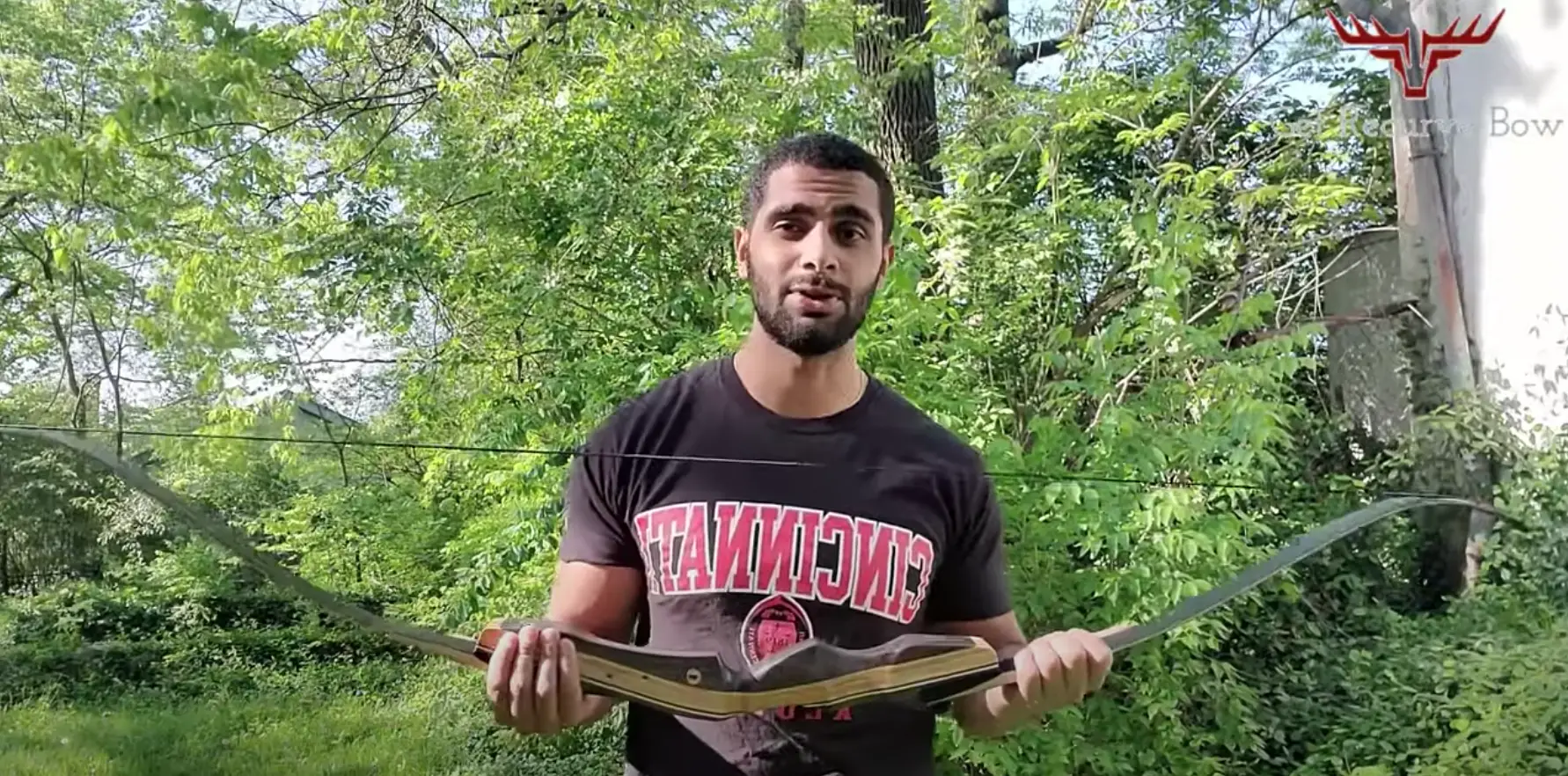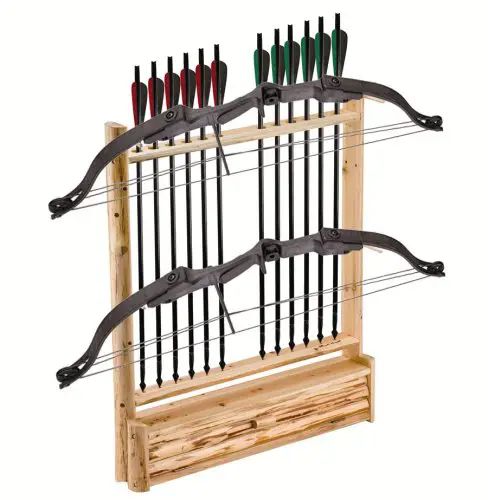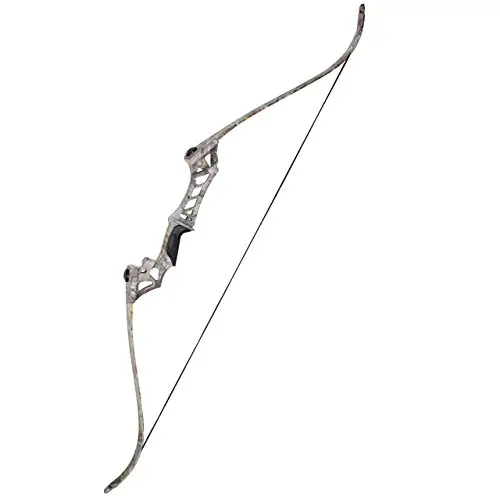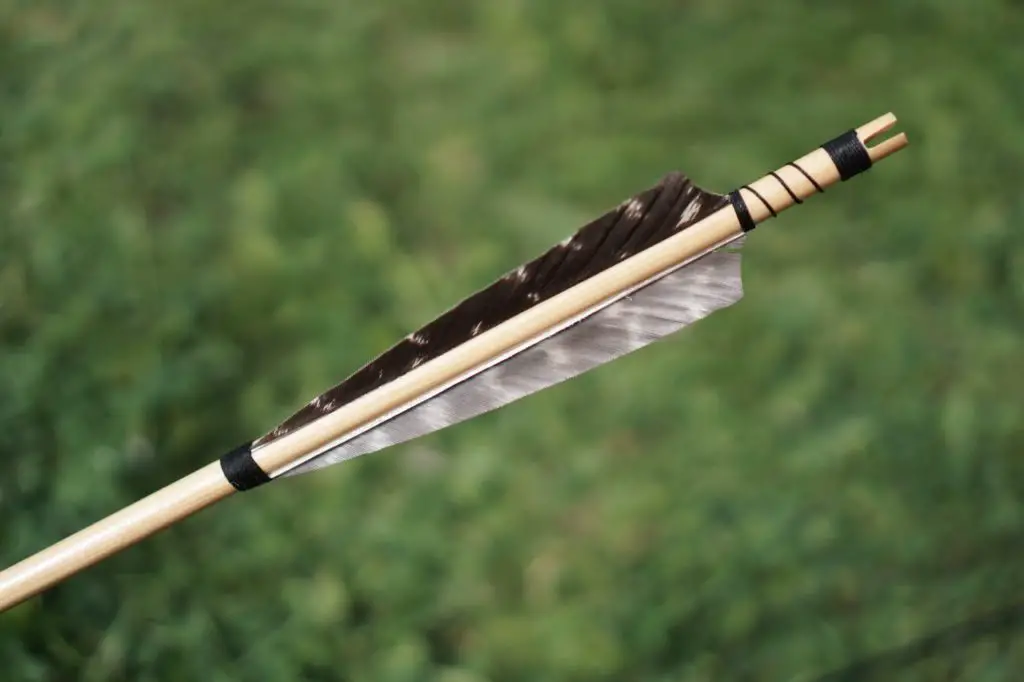Recurve bows have a unique design where the tips curve away from the archer when the bow is unstrung. With so many differing opinions on how to store a recurve bow properly, we have decided to address these contradictory opinions to help educate on the proper way to store, hang, maintain, and ensure that you are informed on the proper ways to help keep your bow in pristine condition.
Like other pieces of archery equipment, it is important to take care of your recurve bow in order to maintain top bow performance.
If you are newer to the world of archery, much of the advice for storage may seem contradictory – you can ask numerous people the same questions and be told something different by each one.
To help point you in the right direction, as well as address some of the apparent contradictions, here is your guide on how to store a recurve bow:
Understanding recurve bows
Let us first walk through the basics that make up a recurve bow. Recurve bows are a classic and widely used choice among archers due to their elegant design and versatility. Understanding key aspects of recurve bows is essential for anyone looking to own a bow or shoot one.
Recurve bows are characterized by their curved limbs. When the bow is drawn, the limbs bend further, storing energy. When the archer releases the string, the limbs snap back into their original shape, releasing the energy and propelling the arrow forward.
Recurve Bow Materials
Understanding the materials used in your recurve bow is fundamental to its care and how to store it. Recurve bows are made from a variety of materials, including wood, fiberglass, and carbon fiber. Wood recurve bows are typically the most affordable, but they require more maintenance.
If your bow is crafted from fiberglass, it can hold its shape indefinitely against the pressure of the bowstring. This means you can typically leave the string on when storing your bow, especially if you plan to use it frequently in the next few days.
Bow Sizes and Draw Weights
Recurve bows come in a variety of sizes and draw weights.
Bow sizes are typically measured by the length of the riser, which is the part of the bow that the archer holds. Recurve bows typically range in riser length from 18 inches to 28 inches.
Draw weight is the amount of force required to draw the bowstring to its full extent. Recurve bows typically range in draw weight from 15 pounds to 70 pounds.
The size and draw weight of a bow should be matched to the archer’s strength and experience level. For example, a beginner archer may want to start with a smaller bow with a lower draw weight. As the archer gains strength and experience, they can gradually increase the size and draw weight of their bow.
Here is a table that provides some general guidelines for choosing a bow size and draw weight:
| Archer experience level | Bow size (riser length) | Draw weight (pounds) |
|---|---|---|
| Beginner | 18-24 inches | 20-30 pounds |
| Intermediate | 24-26 inches | 30-40 pounds |
| Advanced | 26-28 inches | 40-60 pounds |
Understanding brace height
The brace height of a recurve bow is the distance from the string to the deepest part of the grip when the bow is unstrung.
Understanding the correct brace height for your specific bow model is crucial for optimizing its performance. Manufacturers provide recommended brace height measurements for their bows, and deviating from these recommendations can affect accuracy and arrow speed.
Generally, a brace height that falls within the manufacturer’s specified range ensures that the bow functions as intended. However, individual preferences may vary, so archers may make slight adjustments to brace height to fine-tune their shooting experience.
It’s essential to consult your bow’s manual or the manufacturer for guidance on the appropriate brace height for your specific model. Good habits in ensuring the proper way to hang a recurve bow or how you store a recurve bow will help maintain the optimum brace height of your bow.
Recurve Bow Case & Backpacks
Hands down the safest way to protect your recurve bow when not in use is by keeping it in a recurve bow case or a recurve backpack. There are cases out there specifically designed to protect your bow’s limbs from scratches while also protecting the integrity of the string.
Also, if you plan on traveling with your recurve bow be it for hunting or to the nearest archery range you’ll need to keep your bow in a case to protect your bow on the go. Nothing is more likely to scratch up your bow than putting it in a car. Damaged limbs and string also mean a decrease in accuracy over time.
If you are interested in getting a recurve bow case or recurve bow backpack to keep your bow, check out these articles. We have covered all types of bow case and bow backpack materials from soft cases to hard backpacks.
Proper storage techniques
Properly storing your recurve bow is vital for preserving its performance and longevity. Whether you’re an occasional archer or a regular enthusiast, following the right storage techniques ensures that your bow remains in top condition.
Storing Your Recurve Bow
When it comes to storing your recurve bow, the goal is to protect it from potential damage and maintain its structural integrity. There are a variety of storage options to consider such as a bow rack, pegs or wall mounts. Here are some helpful key considerations:
For Strung Bows:
- Hanging Method: If you plan to store a strung recurve bow, the best approach is to hang it horizontally from two pegs. These pegs should support the limbs of the bow, never the string. This method essentially hangs the bow ‘upside down,’ preventing unnecessary stress on the limbs and string.
For Unstrung Bows:
- Horizontal Placement: When storing an unstrung recurve bow, lay it horizontally on a shelf or any flat surface where the weight is evenly distributed. Some archers even use a bed in a spare room as a makeshift shelf. Ensure that the tips of the bow don’t hang over the edge to prevent potential damage.
Hanging your recurve bow
Properly hanging your recurve bow is an essential way to store your bow to prevent damage and maintain its shape. If you choose to hang your bow, remember to follow these guidelines:
- Use two sturdy pegs or hooks to support the bow.
- Ensure that the bow is hung horizontally, with the limbs supported.
- Never hang the bow by the string alone, as this can cause damage.
- Hanging your bow in this manner helps distribute weight evenly and keeps the bow in optimal condition.
Hanging Options
When it comes to hanging your recurve bow, you have a few options to choose from, depending on your storage space and preferences:
- Wall Mounts: Wall mounts specifically designed for bows are available and provide a secure way to store your bow and a space-saving storage solution.
- Bow Racks: Bow racks come in various styles and sizes, allowing you to display your bow on a wall or cupboard and keep it protected.
- Pegs or Hooks: If you prefer a DIY approach, sturdy pegs or hooks can be mounted on a wall to create a custom storage solution for your recurve bow.
Additional Protection When You Store Bow:
- Bow Sock: Consider investing in a bow sock, especially if you plan to store an unstrung bow for extended periods, such as during the off-season. A bow sock provides an extra layer of protection to keep dust and minor impacts away from your bow
- Bow Case: Leaving your bow in its case can also help prevent it from accidental damage and keep it from harm. There is a large variety of bow cases in the market ranging from soft to hard. Be sure to check out our article: Best Recurve Bow Case before you make a decision!
Best Places to Store Your Bow
The place where you store bow is also important in order to maintain its performance and longevity. Among the key things to consider on where to keep your bow is your bow size, is it made from soft (wood and bamboo) or hard material (carbon fiber, aluminium and fiberglass). Here is a list of the best places to store/keep a bow:
- In a bow case or backpack. This is the safest place and most secure way to store your bow, as it will protect it from dust, dirt, moisture, and other damage.
- In a dry, cool place, preferably on a rack. Avoid storing your bow in direct sunlight or in humid conditions, as this can damage the bow’s limbs and string.
- Always store your bow horizontally as mentioned above. This helps keep the bow and limbs intact and prevent the bow from warping.
If you are storing your bow in a garage, be sure to choose a place/location that is free from moisture and extreme temperatures. You may also want to consider using a bow case or bow rack to protect your bow from dust and dirt.
Here are some specific examples of good storage place/locations:
- On a wall: You can mount a bow rack on the wall to store your bow horizontally.
- On a shelf: You can place your bow case or bow on a shelf to store it horizontally.
- In a closet: If you have a closet in your garage, you can store your bow case or bow in there.
- On a rack: Besides mounting your bow on a wall, you can use a rack to display it anywhere within your house such as a console table or a cupboard.
Avoid These Common Mistakes When You Hang/Store Your Recurve:
- Vertical Storage: Never store or keep your bow by resting it on a wall vertically on its tips and leaning it in a corner. This can lead to rapid damage to the bow’s tips.
- Single Nail Hanging: Refrain from hanging your bow from a single nail, as this can cause the bowline to break over time.
- Moisture and Extreme Temperatures: Choose a storage location that is free from moisture or extreme temperature fluctuations. Exposure to humidity or extreme cold can harm your bow’s limbs and its related members, potentially causing warping or softening.
By following these proper storage techniques, you can ensure that your recurve bow remains in excellent condition and ready for your next archery adventure.
Bow maintenance
Proper maintenance of your recurve bow is essential for ensuring its longevity and to keep its consistent performance. Regularly caring for your bow helps prevent wear and damage, ensuring that it remains in top shape for your archery endeavors and to keep it looking new.
To String Or Not To String?
One of the most common questions when it comes to storing a recurve bow (be it within the case, on a rack or inside a bow backpack) is whether or not the string should be left on the bow. The answer to this is often ‘it depends’ which can understandably leave new recurve bow owners a bit confused.
To help sort out if the string is best left on or off your bow, consider the following questions:
- Is your bow made of fiberglass?
- Are you going to use your bow in the next few days?
- Is your bow relatively new?
If you answered ‘yes’ to one or more of these questions, it is safe to say that you can keep your bow strung when you store it.
Recurve bows made from fiberglass will hold their shape indefinitely against the pressure of the bowstring, so you can almost always leave the string on (although if you are not using for an extended period of time, best practice would dictate that you unstring the bow).
Likewise, if you are using your bow every few days, you don’t need to unstring it. Lastly, if your recurve bow is newer, the materials are stiffer and less likely to ‘follow the string’ and impact the draw.
String On vs Restringing
One of the most common questions when it comes to maintaining a recurve bow is whether or not to leave the string on when storing the bow. The answer to this question depends on several factors, including the material of your bow, your frequency of use, and the bow’s age.
There are times when you will unstring your bow to store it. If you are traveling and/or if you are a seasonal bow user, removing the string before you store your recurve bow is best.
If you feel stuck between choosing one of the two, here’s a checklist to help you decide on which is the best option for you and your bow:
- Material Considerations: If your recurve bow is made of fiberglass, it is generally safe to leave the string on when storing it. as fiberglass is known to be a siff and hard material. Fiberglass bows have the ability to hold their shape even when under the tension of the bowstring. However, it’s advisable to unstring the bow if you’re not planning to use it for an extended period.
- Frequency of Use: If you use your recurve bow regularly, leaving the string on can be a convenient option. Bows that see frequent use don’t necessarily need to be unstrung between sessions. However, if you’re a seasonal or occasional archer, it’s a good practice to unstring the bow during long periods of inactivity.
- Bow’s Age: The age of your recurve bow can also influence the decision. Newer bows, with stiffer and more resilient materials, are less likely to experience issues related to prolonged stringing. Older bows, especially those made from traditional materials like wood, may benefit from regular restringing due to wear and tear that is prone to make them soft. Apart from that regular restringing is also done to keep the bow from material fatigue.
Trust your recurve bow’s material and your instincts. Newer bows can hold a string while older bows need some breathing time. When you are ready to restring, always use a bow stringer. Trust us – it’s worth the small investment for your bow!
Bowstring Care
The bowstring is a critical component of your recurve bow, and its proper care is essential for consistent performance.
- Regular Inspection: Periodically inspect your bowstring for signs of wear, fraying, or damage. Look for any loose or broken strands. If you notice any issues, it’s crucial to address them promptly to prevent string failure during use.
- Waxing the Bowstring: Waxing your bowstring is a maintenance task that helps maintain the string’s integrity. Bowstring wax is specifically designed to lubricate and protect the fibers, reducing friction and preventing moisture from compromising the string’s strength. Follow the manufacturer’s recommendations for waxing frequency and technique, as over-waxing can also be detrimental.
- String Replacement: Over time, even with proper care, bowstrings may become worn and lose their elasticity. When a bowstring shows significant signs of wear or damage, it’s essential to replace it to ensure safe and reliable shooting. Consult with a professional bow technician or archery shop to select the appropriate replacement string for your recurve bow.
Archery Equipment Maintenance
In the world of archery, maintaining not just your recurve bow but all your archery equipment is essential for a successful and enjoyable shooting experience. While we’ve covered the bow maintenance aspect in Section 3, it’s crucial to understand that archery equipment encompasses a broader spectrum of gear beyond just your bow.
Bow Maintenance (Continuation from Section 3)
We’ve already delved into the importance of maintaining your recurve bow, addressing questions about whether to leave the string on or restring, and how to care for your bowstring. Remember, the better you maintain your bow, the longer it will last and the more consistently it will perform.
Archery Equipment Maintenance
Archery equipment extends beyond the bow itself and includes various components that contribute to your overall shooting experience. Proper maintenance of these components ensures that everything functions harmoniously for accurate and enjoyable archery sessions. Here’s a breakdown of essential archery equipment maintenance:
- Arrows: Regularly inspect your arrows for signs of damage, such as bent shafts or cracked nocks. Damaged arrows can be unpredictable in flight and may lead to inaccurate shooting. Ensure that your arrows are straight, and if you find any defects, replace them promptly.
- Quiver: Your quiver is not just a convenient accessory for holding your arrows; it also plays a role in protecting them. Inspect your quiver for any loose stitching, torn pockets, or other issues. A well-maintained quiver keeps your arrows secure and easily accessible.
- Sights and Scopes: If you use sights or scopes on your bow, ensure that they are properly calibrated and securely mounted. Loose or misaligned sights can lead to inconsistent accuracy. Periodically check the screws and adjustments to maintain precision.
- Rests and Plungers: If your recurve bow features arrow rests or plungers, make sure they are clean and free from debris. These components directly affect arrow flight and accuracy. Clean them regularly and replace any worn parts.
- Release Aids and Finger Tabs: If you use a release aid or finger tab, inspect them for wear and tear. Ensure that the release mechanism functions smoothly, and replace any worn parts or damaged finger tabs to maintain a comfortable and consistent release.
- Targets: If you have your own target, keep it well-maintained. Check for holes and tears in the target material and repair or replace it as needed. Maintaining a functional target ensures that you can practice effectively and safely.
By paying attention to the maintenance of your archery equipment, you’ll not only enhance your shooting experience but also ensure safety and consistency in your performance. Just as with bow maintenance, regular inspection and timely repairs or replacements are key to enjoying archery to the fullest.
Frequently asked questions
To store a recurve bow long term, it’s essential to follow proper storage techniques. If the bow is unstrung, lay it horizontally on a flat surface where the weight is evenly distributed, and the tips do not hang over the edge. You can also use a bow sock for added protection. For strung bows, hang it horizontally from two sturdy pegs, ensuring the limbs are supported. Avoid storing it vertically on its tips or by hanging it from a single nail.
Storing a recurve bow for winter requires extra care due to temperature fluctuations. Choose a dry, indoor location away from extreme cold or humidity, such as a climate-controlled room. If your bow is unstrung, follow the same horizontal storage guidelines mentioned earlier. If it’s strung, ensure it’s hung horizontally to maintain its shape.
While it’s generally recommended to store a recurve bow horizontally, if you must hang it vertically, use a wall mount or bow rack designed for vertical storage. Make sure the bow is securely supported and that the string is not under tension. However, horizontal storage is safer for the bow’s integrity.
To hang a recurve bow on the wall, use wall mounts or bow racks specifically designed for this purpose. These accessories provide secure and safe storage for your bow. Ensure that the bow is supported adequately, and it hangs horizontally to avoid any stress on the limbs or string.
To store a recurve bow string properly, it’s best to remove it from the bow when not in use for an extended period. Store the string in a cool, dry place, preferably in a bow string bag or pouch to protect it from dust and dirt. Regularly inspect the string for any signs of wear, and consider applying string wax to maintain its condition and prevent moisture damage.
Conclusion
Like most things, the better you take care of your bow, the longer it will last. Storing your recurve bow is one part of bow care where the best care takes very little effort; all you need are two pegs and a bow-stringer. It may seem simple, but proper storage can be what makes or breaks your recurve bow and if done properly, your bow will have a long, healthy life.
If you’re looking for a new bow, why not go ahead and check out our detailed list of the 5 best recurve bows?


Archery is my hobby & I usually hunt and play on weekends and after work. It’s a passion since I was very young and I love writing about it as well to continuously learn more and share the love of archery with others!





